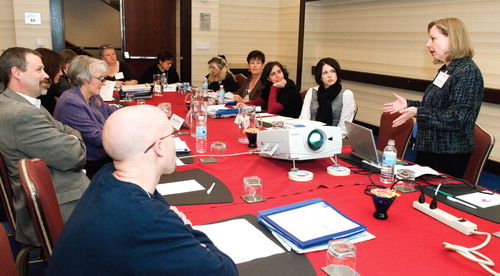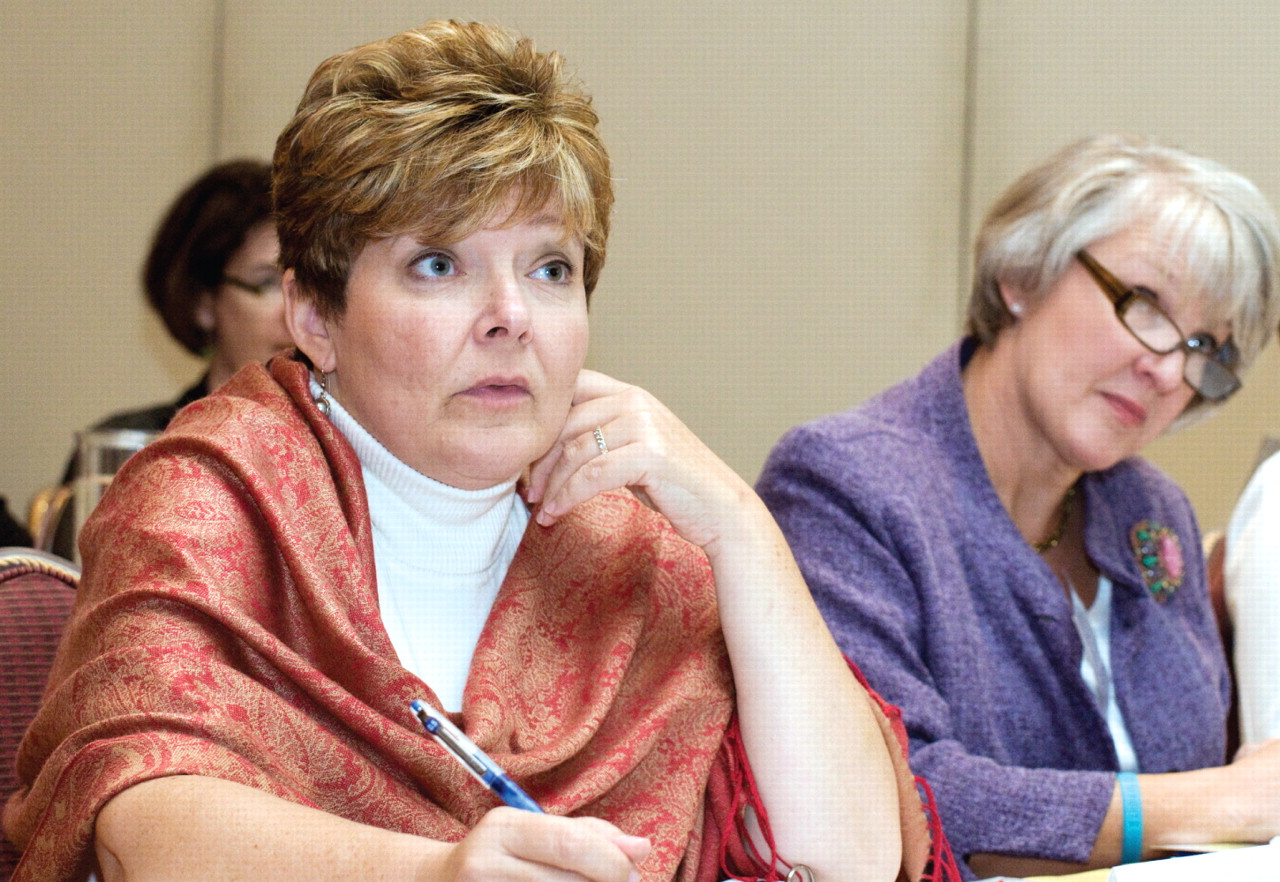District Branch Executives Learn How to Maximize Effectiveness
District branch and state association executives immersed themselves in the organizational tools offered through APA's “Model District Branch” program at the annual executive staff leadership conference held in Washington, D.C., in November.
The conference was attended by many state association and district branch executives, who focused on ways to implement aspects of the “Model District Branch” document, which was created by the APA District Branch Advisory Corresponding Committee in 2007 and revised in October. The model provides the basic guidelines that district branches and state associations can use to provide services to their members more efficiently and comprehensively. It describes the essentials of managing a district branch and optional functions to enhance service delivery and respond to “external pressures.”

The model provides guidance on activities organized by district branches, qualifications that branch executives should have, and sample bylaws under which the branches can operate. The recommendations for increased efficiency described by the model and at the meeting on such topics as recruitment and retainment of new members are particularly important in a time of lean budgets and shrinking medical-industry support, according to APA leaders.
“This meeting is very valuable for APA,” said APA Medical Director James H. Scully Jr., M.D., in comments to the attendees about the benefits provided to the overall Association.
Many attendees agreed that the training and materials provided during the conference were particularly well timed.
“This will be really helpful in making our organization more functional and compliant” with tax and other regulations, said Paige De Mille, executive director of the Utah Psychiatric Association.
De Mille came to the November meeting specifically for insights on Web site design and content. A good district branch Web site can help not only its members, she said, but also the public, the media, and other physicians through the information it provides on mental illness and its treatment.

DB executive directors Janet Shaw and Robin Huffman participate in a best-practice sharing workshop during APA's District Branch/State Association Leadership Conference.
Credit: Sylvia Johnson Photography 2008
“The members want this, but it is also a good connection to the community,” De Mille said.
The wish to improve connections with other district branches and other groups concerned with mental health issues brought Valerie Lewis, executive director of the Vermont Psychiatric Association (VPA), to the meeting. The insights she gleaned on techniques for successful cooperation with other state advocacy groups and medical societies will be used to increase collaborations on a regional level. Such relationships help make up for shortages of a district branch's funding and time, she noted.
Lewis also hoped to learn more about effective state legislative lobbying during a session on that activity. The session included training on ways in which district branches can promote, oppose, or amend legislation. Lobbying insights are especially important to the VPA, she said. The VPA accepts no pharmaceutical industry funding that it can use for advocacy or other activities, and plans to push for legislation in 2009 requiring more open disclosure by drug and medical device makers of payments to physicians and hospitals.
Rebecca DeFilippo, executive director of the Eastern Missouri Psychiatric Society, described the November meeting as “motivating” because discussion of the model district branch taught her not only what organizational documents a district branch needs to keep but also provided her and the other executives with model forms for gathering and organizing such information. She cited the model ethics documents as an example of the type of valuable documents that APA provides.
DeFilippo, as well as other executives with whom Psychiatric News spoke, was effuse in her praise of APA for using its resources in lean economic times to continue to provide much-needed training through the November leadership conference. That assistance, she said, is an extension of the training APA provided when she first started in her position and guidance that APA staff continues to provide.
“I find it so helpful to be able to learn from my counterparts and do the job without having to reinvent the wheel,” she said.
APA's “Model District Branch” document is posted at<www.psych.org/Resources/BranchesStateAssociations/ResourcesforDBSAs/Documents/ModelDB/ModelDB.aspx>.▪



